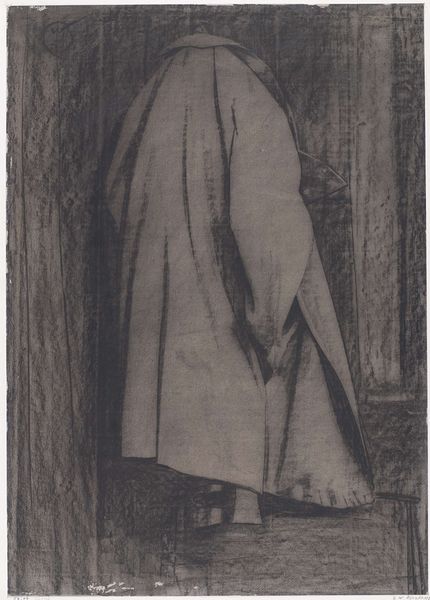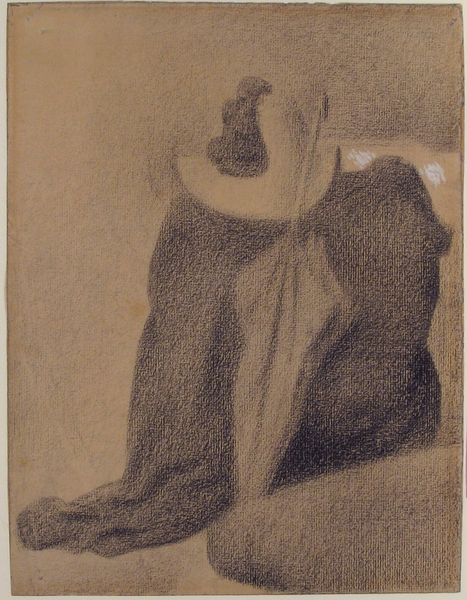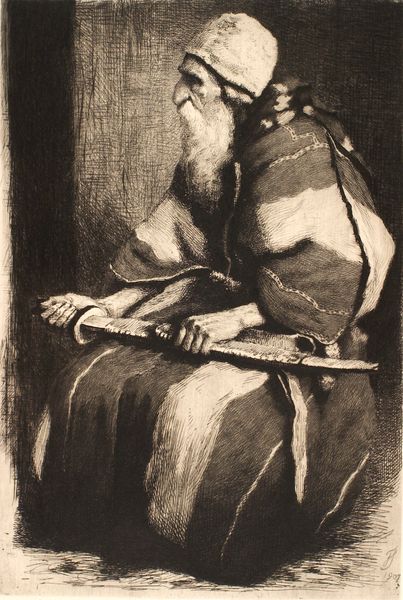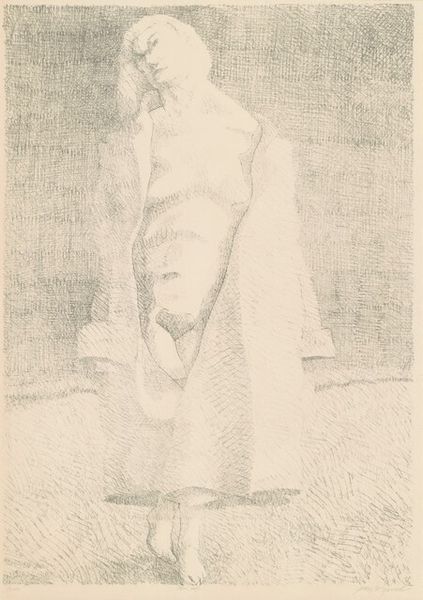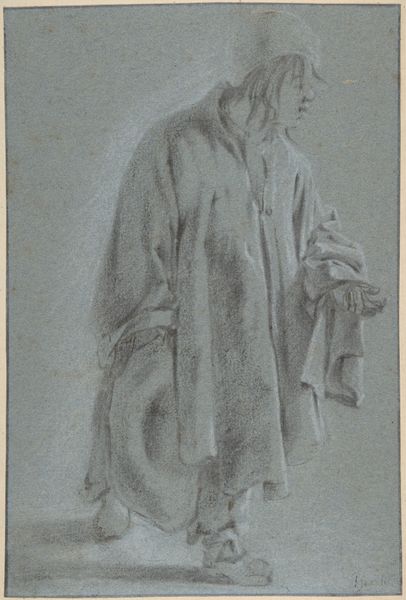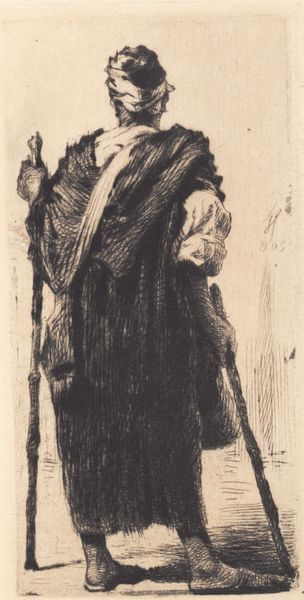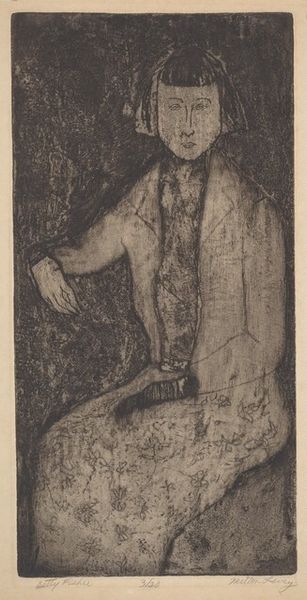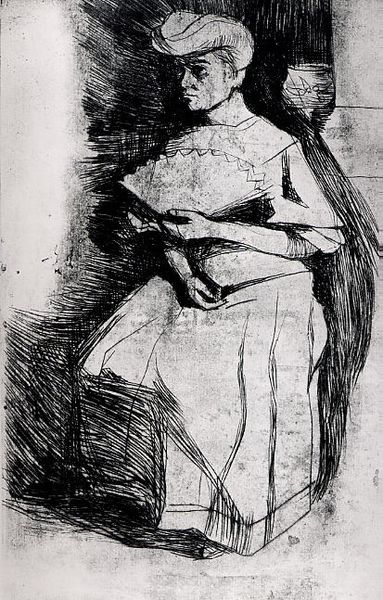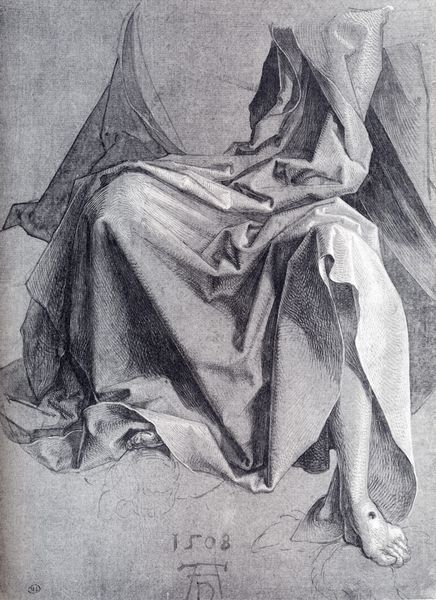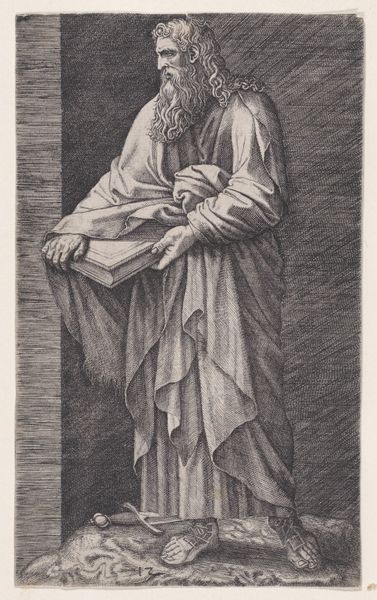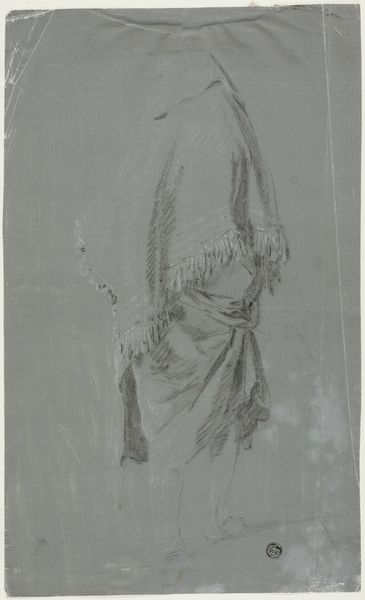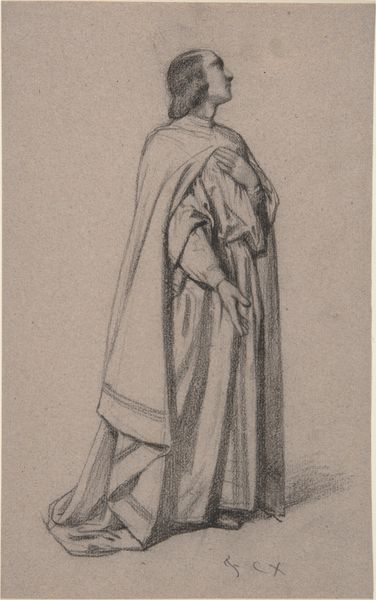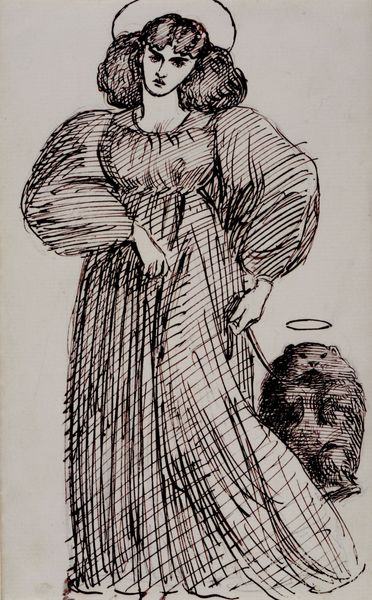
drawing, charcoal
#
portrait
#
drawing
#
narrative-art
#
charcoal drawing
#
figuration
#
pencil drawing
#
romanticism
#
portrait drawing
#
charcoal
Copyright: Public domain
Curator: Standing before us is "Abbé Faria in 1822 in If Castle," a drawing crafted by Paul Gavarni in 1846. The work employs charcoal to depict its subject. What strikes you first about this image? Editor: The overriding feeling is one of profound introspection and vulnerability. The man is shrouded, almost swallowed by his garment. The charcoal work evokes a world of shadow and stark lines. Curator: Gavarni captures Abbé Faria, a prominent character in Alexandre Dumas' "The Count of Monte Cristo". He's not just a prisoner but a symbol of intellect and resilience in the face of confinement. Note the pentagram or geometric figure etched on the background walls? Editor: Precisely, the pentagram resonates—not so much as a symbol in itself, but more as a visible mark representing the confines of knowledge, its edges etched against a somber setting, subtly signifying boundaries, whether physical or of the mind. How do we reconcile this stark image with Romantic ideals? Curator: It exemplifies a Romantic fascination with the internal life, pushing the boundaries of human experience, and a potent image of solitary confinement. There is both the body and the mind at work. Gavarni invites us to consider the enduring nature of hope even in a location, a physical setting devoid of it. Editor: Indeed. Look at the way Gavarni uses the hatching to sculpt the form beneath the cloak and face. It is a superb rendition in tonal range that underscores both the weight of the subject and a light suggesting the vitality that is yet to be quelled. There’s even a sense of movement here in the swirls of the drawing and placement of figure, too. Curator: In the narrative context, the very visible construction happening on the back walls reflects the Abbé's active, and somewhat frantic, mental life, even in the face of utter physical stillness. These etched marks represent active processes of reasoning, communicating the symbolic relationship of form and being. Editor: Yes, the artist draws our attention from the Abbé's contemplative stance into a more expansive notion of imprisonment. Overall, the charcoal medium emphasizes the raw essence of imprisonment and reflection—its physical manifestation. Curator: It highlights the power of the imagination to transcend, or perhaps, to attempt transcendence, even within the most oppressive circumstances. Editor: A master class in monochromatic emotive capacity, underscoring the figure's introspective stance with only a very slight physical means. Curator: Indeed. Gavarni has truly encapsulated that critical turning point for Abbé Faria, where physical captivity gives rise to a burgeoning interior life.
Comments
No comments
Be the first to comment and join the conversation on the ultimate creative platform.
